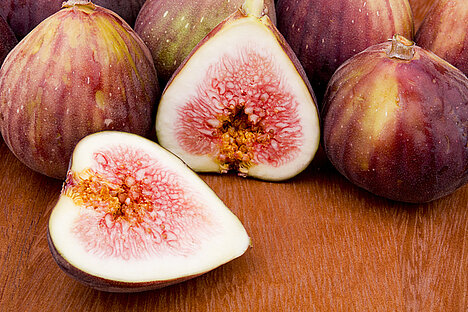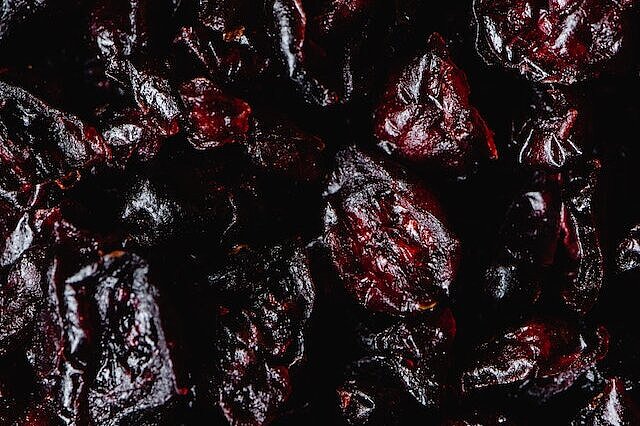Figs

What are figs?
Figs are the fruit of the fig tree, a plant from the mulberry family. They are oval or pear-shaped and have a greenish, brown or purple skin. Inside there are many small seeds surrounded by soft, sweet flesh. Figs can be eaten fresh or dried. They contain many vitamins, minerals, fiber and antioxidants.
Benefits of figs for dogs
Figs, when fed in moderation, can have some health benefits for dogs. For example, they can
- aid digestion: Figs are rich in fiber, which can stimulate bowel movements and prevent constipation. They can also help to reduce harmful bacteria in the gut and boost the immune system.
- Nourish skin and coat: Figs contain vitamins A, C and E, which are important for skin and coat health. They can relieve inflammation, accelerate wound healing and ensure a shiny coat.
- Protect the heart: Figs contain potassium, magnesium and calcium, which can regulate blood pressure and support the cardiovascular system. They also have a blood-thinning effect, which can reduce the risk of blood clots.
- They strengthen the immune system: Figs have a high antioxidant capacity that can protect cells from free radicals. Free radicals are harmful molecules caused by environmental factors or aging that can lead to chronic diseases such as cancer or arthritis.
Disadvantages of figs for dogs
Although figs are healthy for dogs, they should not be fed in large quantities or to all dogs. Some possible disadvantages of figs for dogs are
- Allergic reactions: Some dogs may be allergic to figs, especially to the skin or milky sap of the plant. Symptoms of an allergy can include itching, skin rash, swelling or breathing difficulties. If you notice these symptoms in your dog, you should consult a vet immediately.
- Gastrointestinal complaints: Too many figs can cause diarrhea, bloating or abdominal pain. This is because figs contain a lot of sugar and fiber, which can overload the gastrointestinal tract. The seeds of the fig can also cause an intestinal blockage if they are not digested properly.
- Weight gain: Figs have a high calorie content and should therefore only be fed as an occasional treat. Excessive consumption of figs can lead to overweight or obesity, which in turn increases the risk of diabetes and other diseases.
Figs are fruits of the fig tree and can be oval or pear-shaped. They are greenish, brown or purple in color and contain many small seeds surrounded by sweet flesh. Figs are rich in nutrients, fiber and antioxidants.
In moderation, figs can be beneficial to dogs' health. They support digestion, skin and coat health, the cardiovascular system and the immune system. However, they should not be fed in large quantities, as allergic reactions, gastrointestinal problems and weight gain can be possible disadvantages. It is important to pay attention to possible symptoms and the dog's tolerance.
If you notice any signs of hypersensitivity or poisoning in your dog, you should see your vet immediately. We are not a substitute for a vet, but we try to be as accurate as possible. Every dog reacts differently and we recommend you get a second opinion or consult your vet if in doubt.
Stay healthy and take good care of your four-legged friend!😊
Similar to Figs
Dates are the fruit of the real date palm, which grows in dry and warm regions. The fruits are dried and preserved after harvesting. They have a brown color, a soft consistency and a sweet...
Plums are the fruit of the plum tree, which belongs to the rose family. There are many different varieties of plums, which differ in shape, color, taste and size. Most plums have an oval or round...
Apricots are stone fruits that belong to the rose family. They have a yellow-orange color and a sweet aroma. The fruit grows on trees and is usually harvested in summer. Apricots can be eaten fresh...
Raisins are made from ripe grapes that are dried. They lose most of their moisture in the process, but not their sugar content. Around four to five kilograms of grapes are needed to make one...



